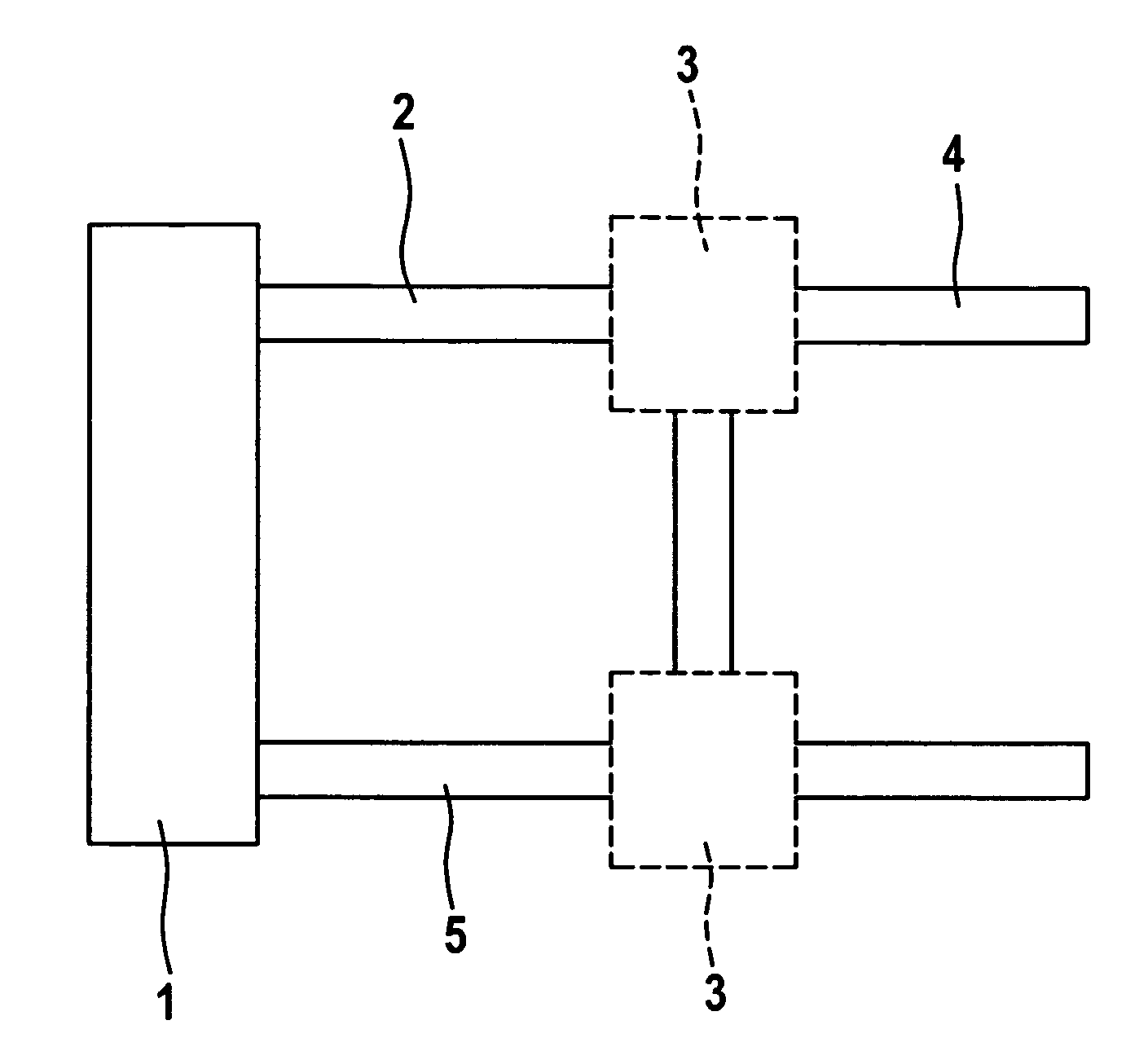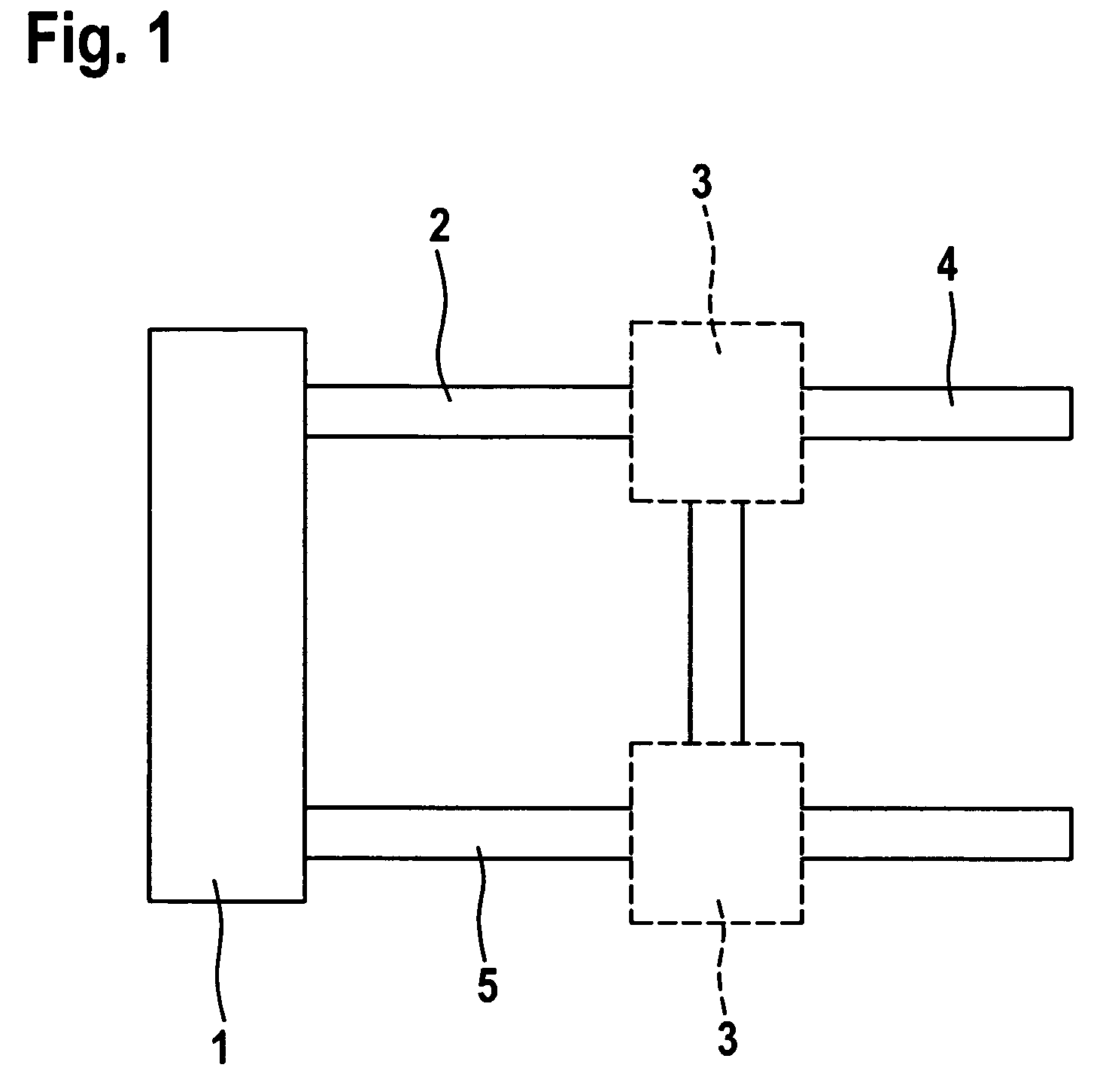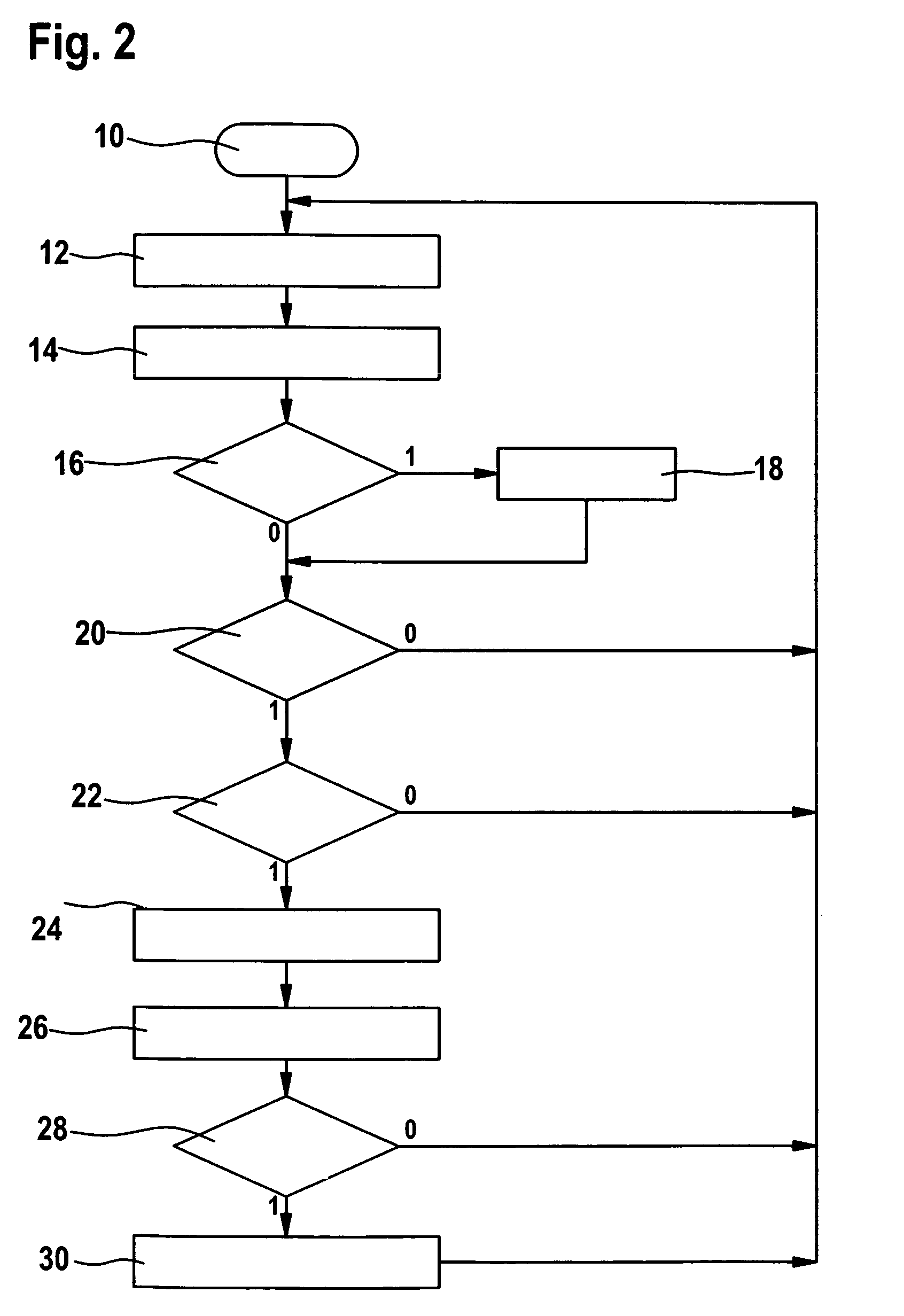Method for determining the exhaust gas temperature of an internal combustion engine
a technology of internal combustion engine and exhaust gas temperature, which is applied in the direction of heat measurement, electric control, instruments, etc., can solve the problems of significant delay of exhaust gas temperature sensor and unsatisfactory high tolerance, and achieve the effect of minimizing tolerance and high dynamic manner
- Summary
- Abstract
- Description
- Claims
- Application Information
AI Technical Summary
Benefits of technology
Problems solved by technology
Method used
Image
Examples
Embodiment Construction
FIG. 1 shows a section of an internal combustion engine including a turbocharger, a combustion chamber 1, an exhaust gas tract 2, a turbocharger 3 and a lambda measuring point 4 being shown. An intake tract 5 is also shown, which supplies air compressed by turbocharger 3 to combustion chamber 1. Exhaust gas tract 2 is connected downstream from combustion chamber 1 and receives the exhaust gas from combustion chamber 1 and passes it on to turbocharger 3. There, the exhaust gas drives a turbine of turbocharger 3. The exhaust gas subsequently reaches lambda measuring point 4, where lambda value λ of the exhaust gas is measured.
A measured exhaust gas temperature T3_test is measured in the exhaust gas tract by an exhaust gas temperature sensor, which is not illustrated. The lambda sensor at lambda measuring point 4 is also not illustrated in detail. However, these sensors are generally known to those skilled in the art. The method according to the present invention is used to prevent ove...
PUM
| Property | Measurement | Unit |
|---|---|---|
| temperature | aaaaa | aaaaa |
| exhaust gas temperature | aaaaa | aaaaa |
| rotational speed | aaaaa | aaaaa |
Abstract
Description
Claims
Application Information
 Login to View More
Login to View More - R&D
- Intellectual Property
- Life Sciences
- Materials
- Tech Scout
- Unparalleled Data Quality
- Higher Quality Content
- 60% Fewer Hallucinations
Browse by: Latest US Patents, China's latest patents, Technical Efficacy Thesaurus, Application Domain, Technology Topic, Popular Technical Reports.
© 2025 PatSnap. All rights reserved.Legal|Privacy policy|Modern Slavery Act Transparency Statement|Sitemap|About US| Contact US: help@patsnap.com



